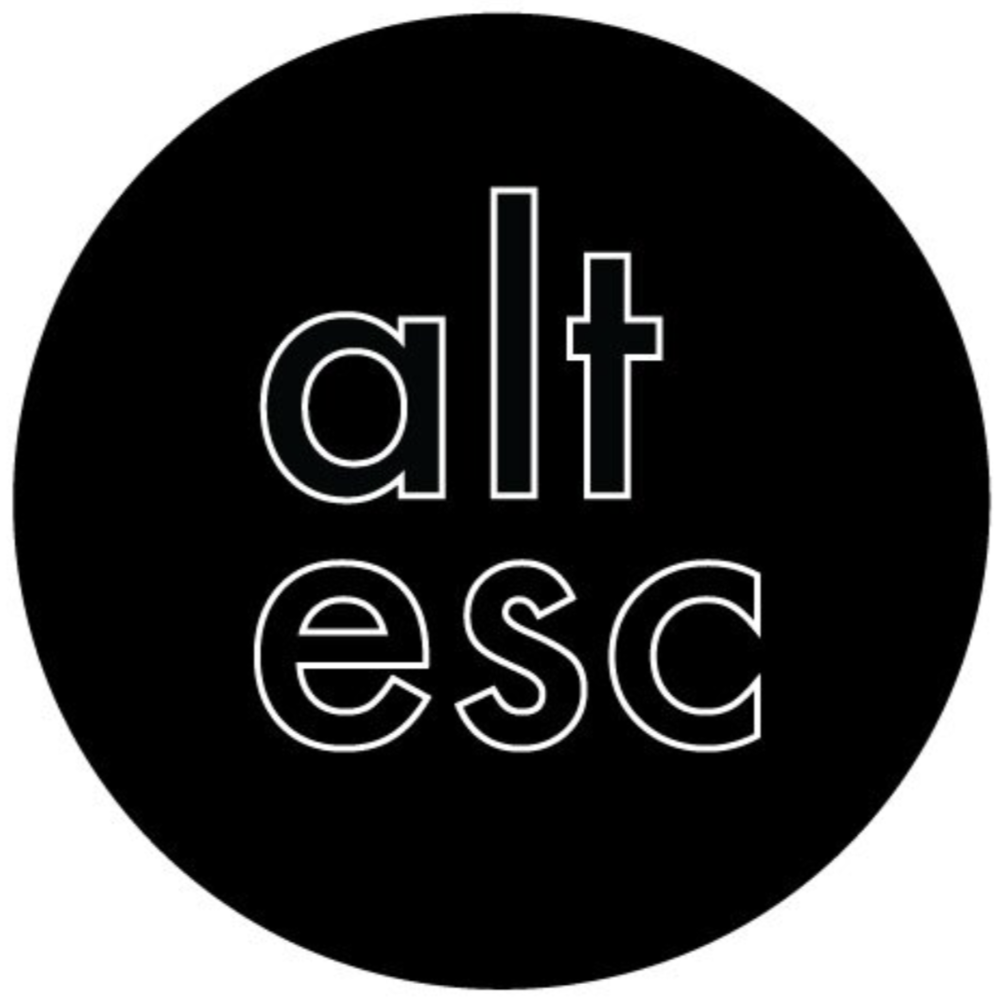ERIC TIMOTHY CARLSON
Eric Timothy Carlson is a Brooklyn-based artist working with the themes of symbolism and semiotics through drawing and the process of accumulation. We met at his studio and talked about sci-fi, the ritual of collecting, and mythology deconstruction. He was recently nominated for a Grammy for Bon Iver's album cover. We showed his installation in our No Vacancy II exhibition in April. His exhibition 2 Apollo is currently on view at Pioneer Works through September 10th.
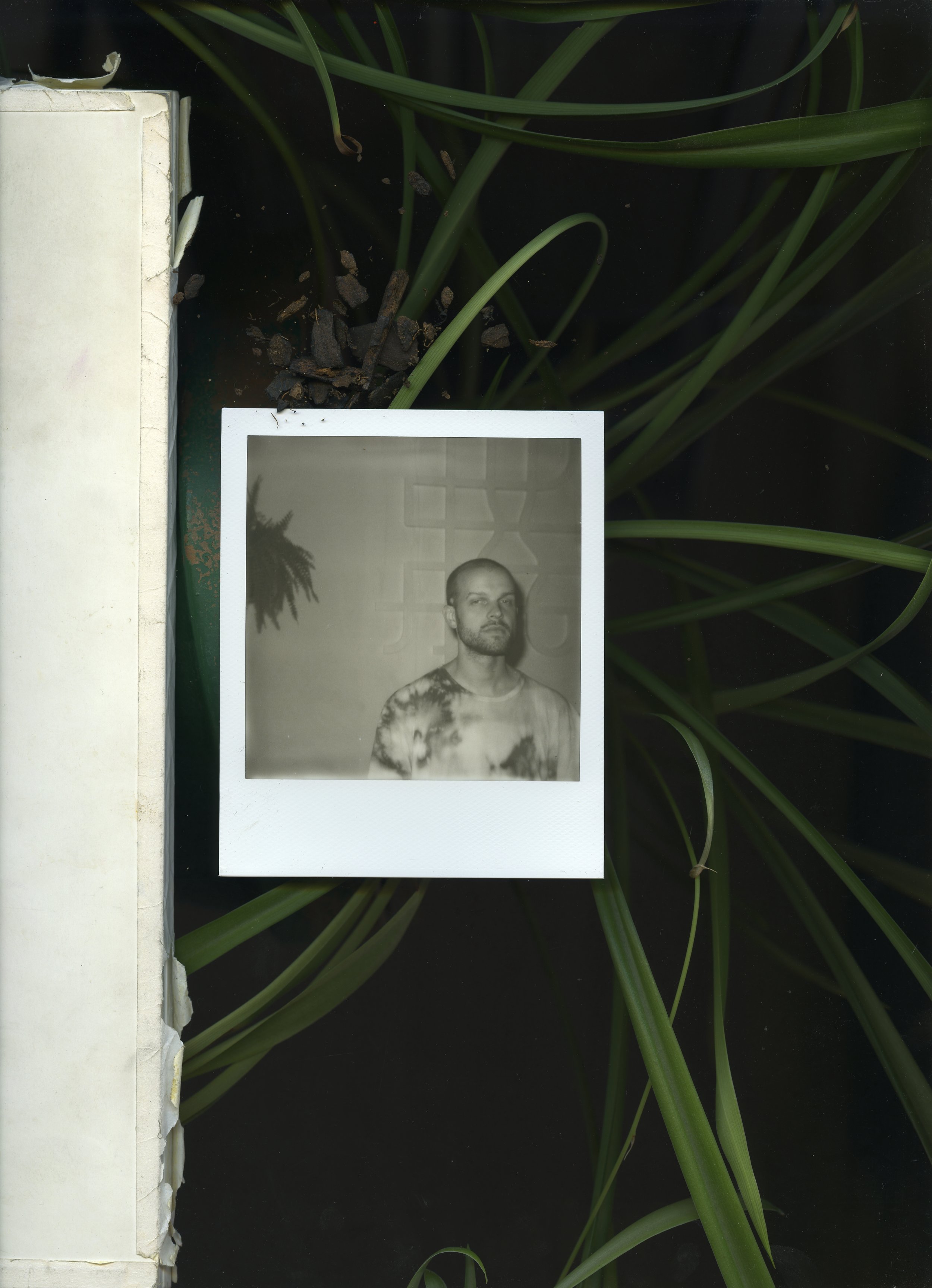
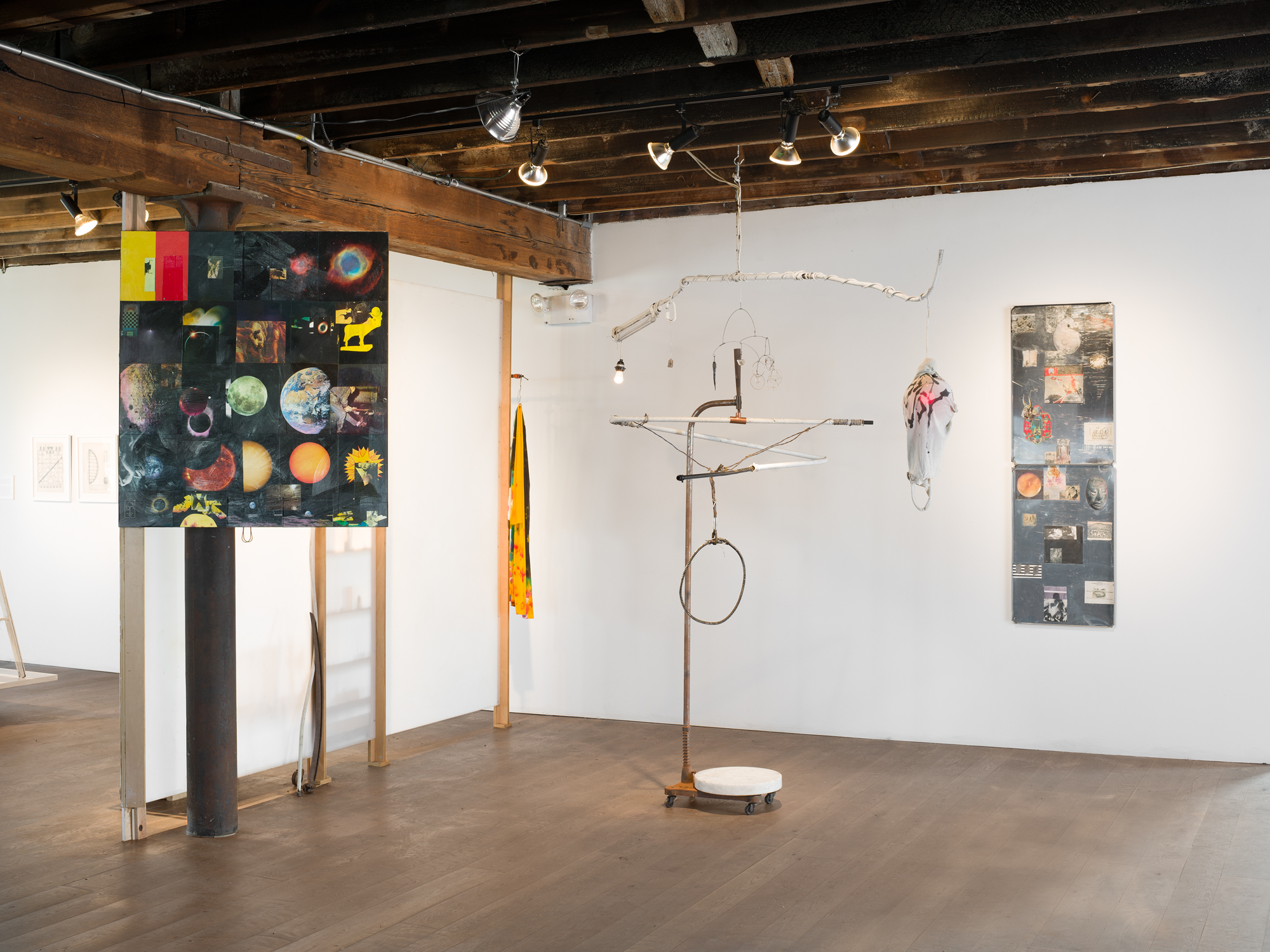
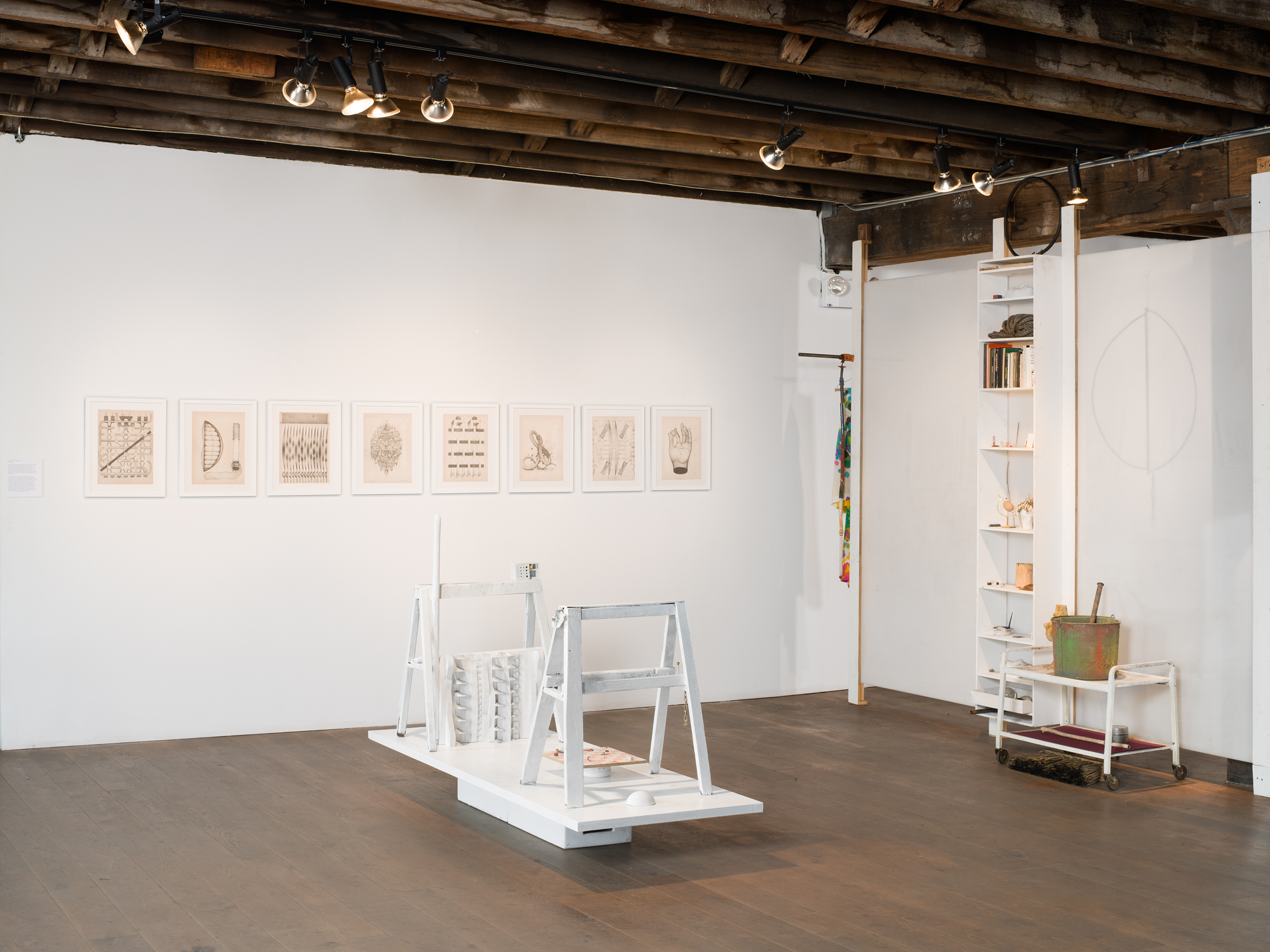
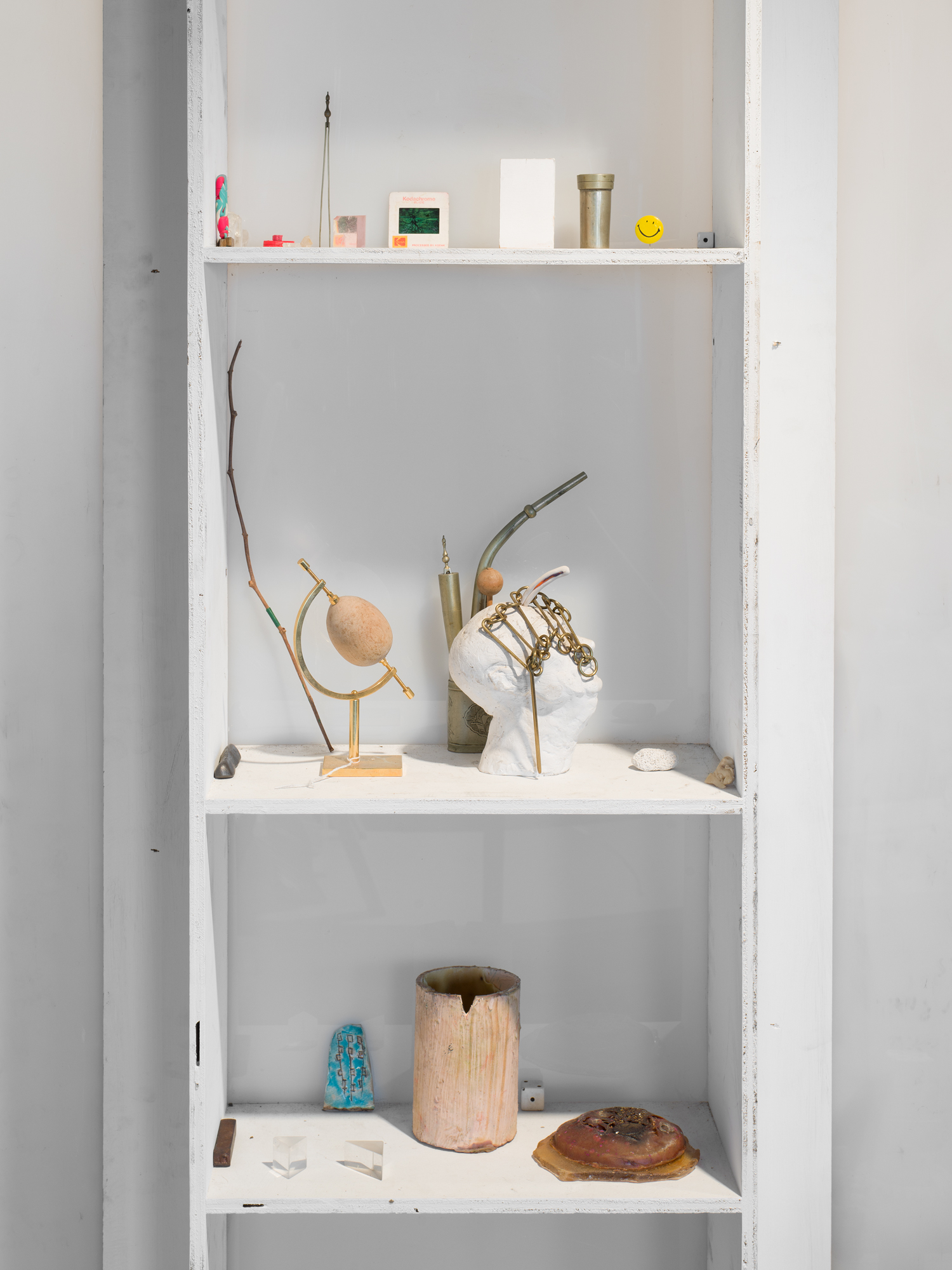
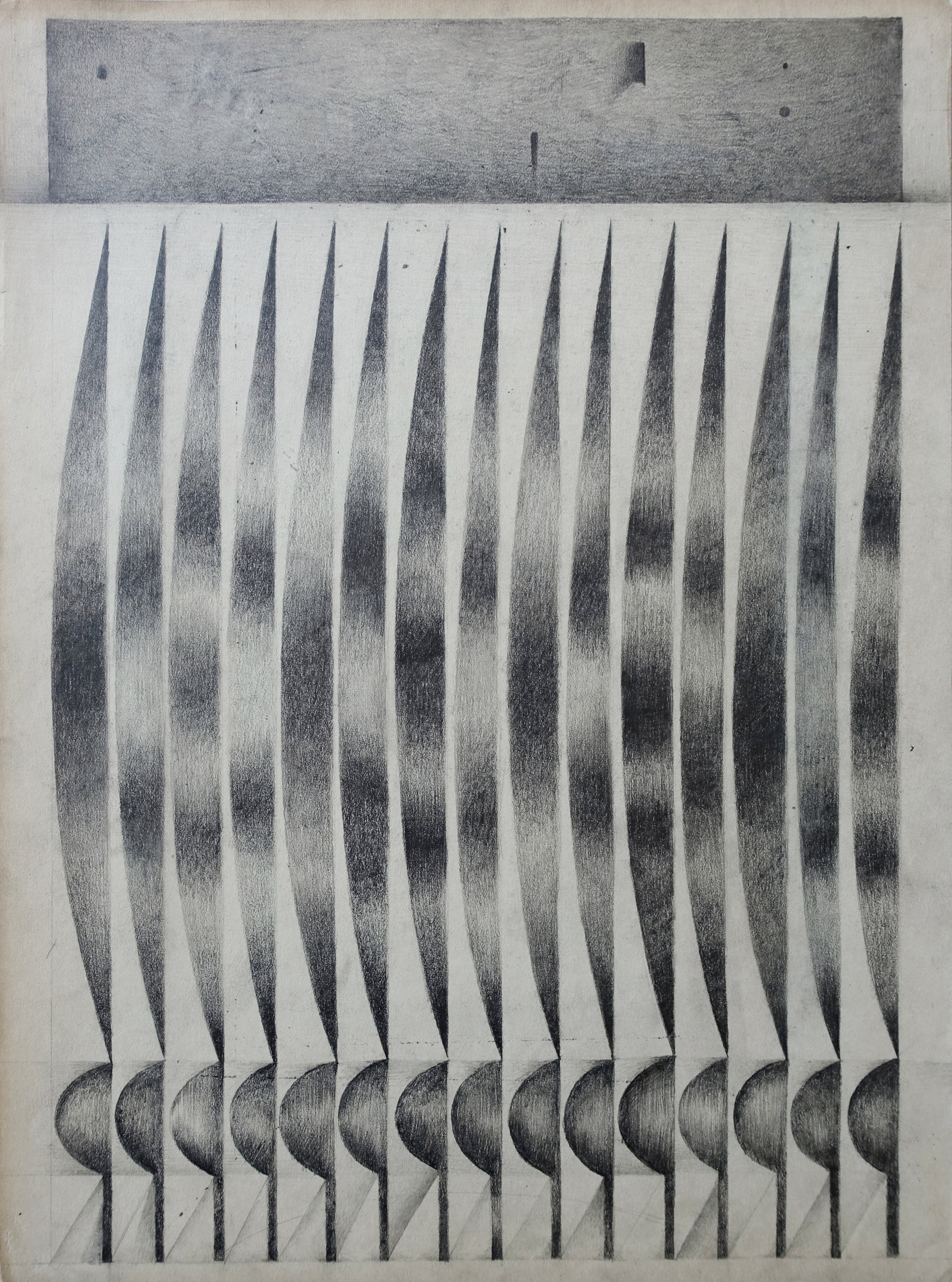
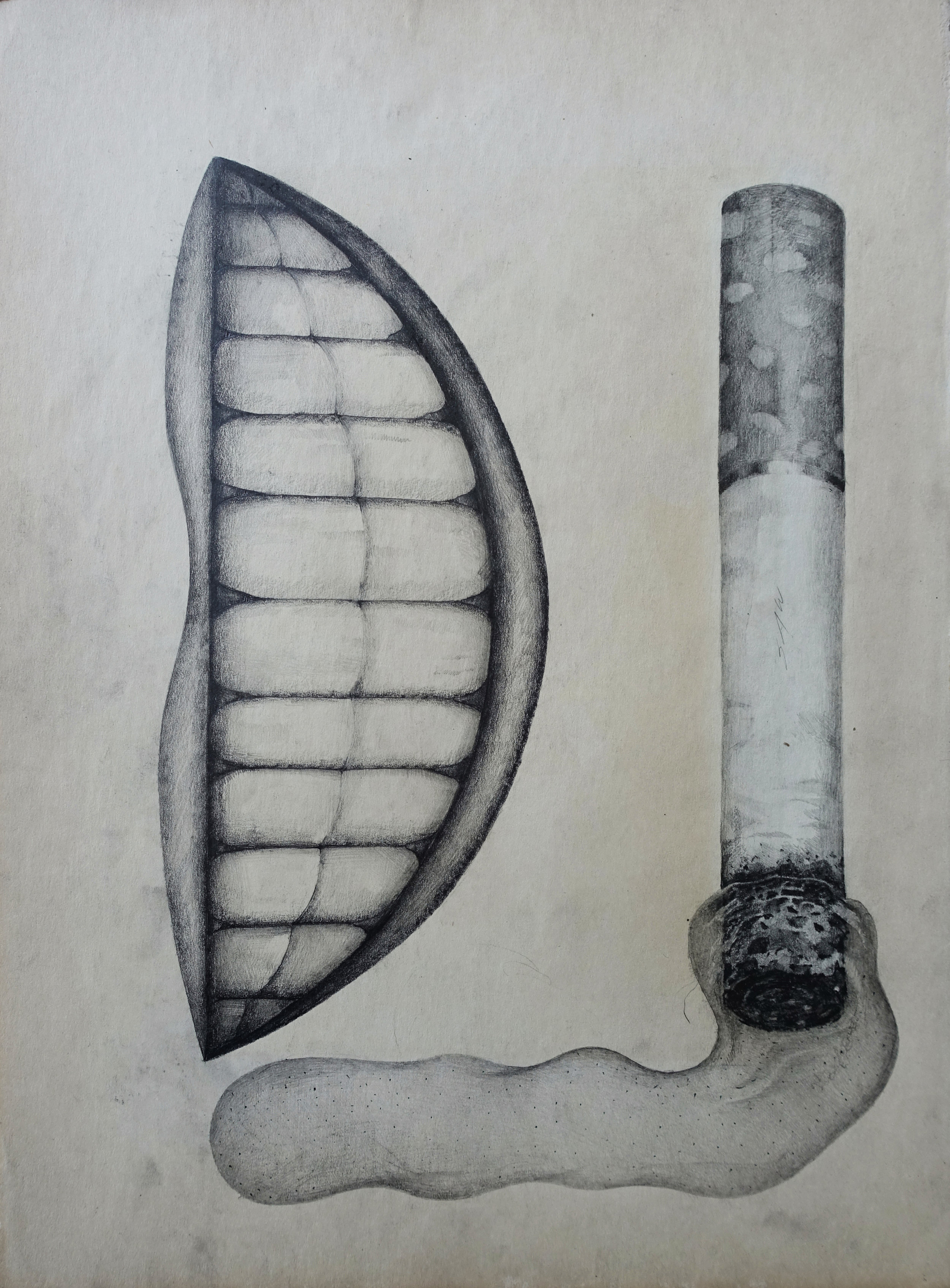
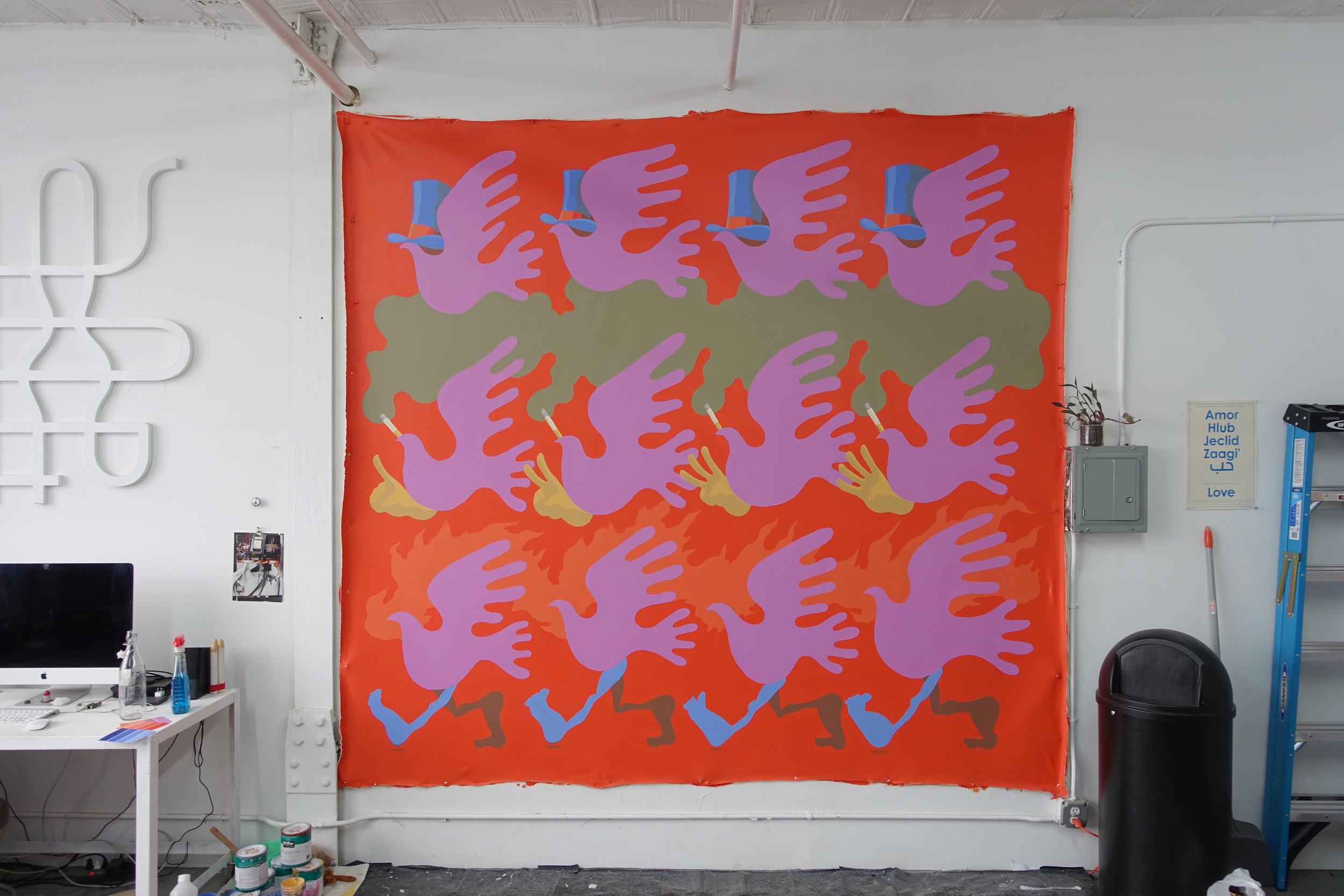
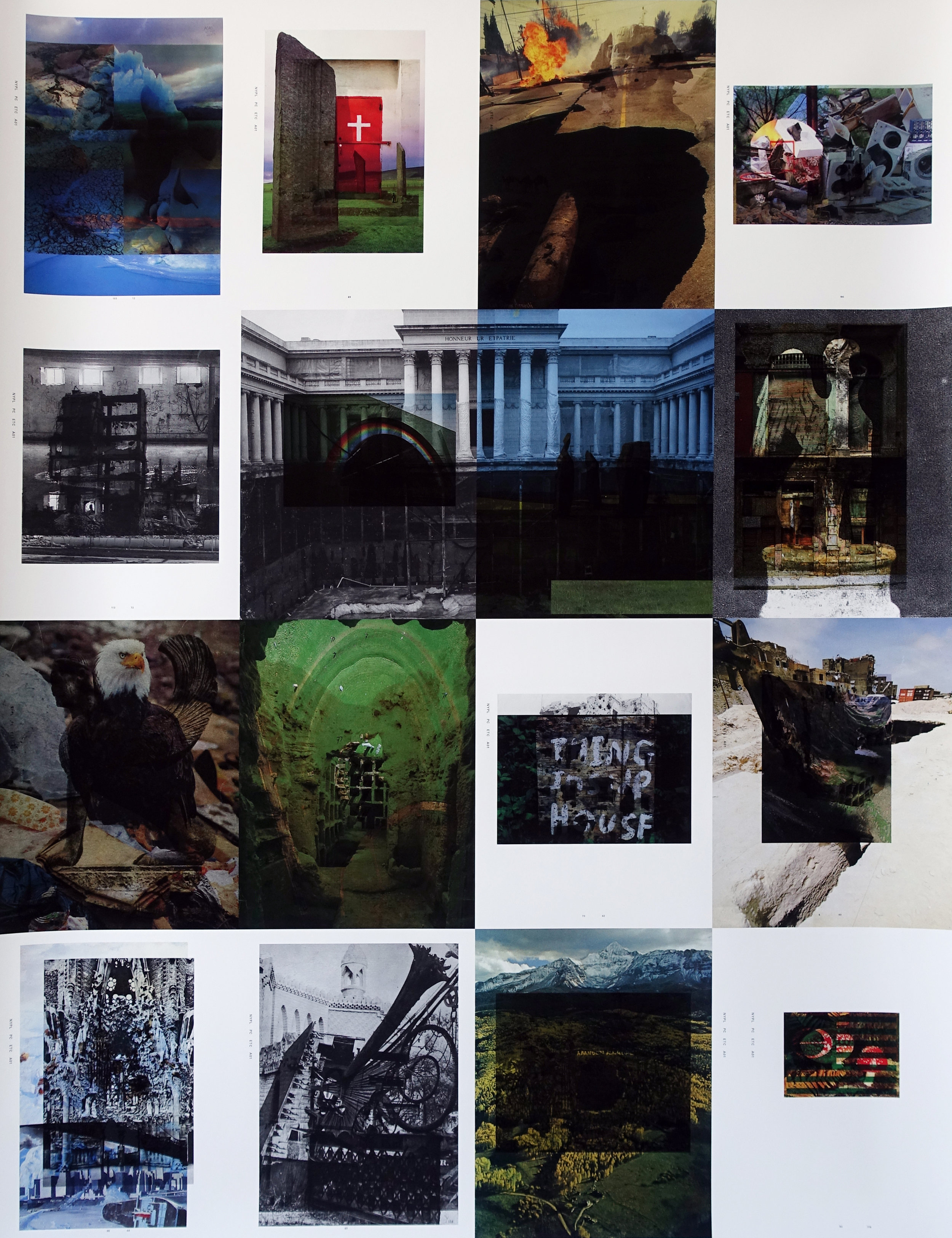
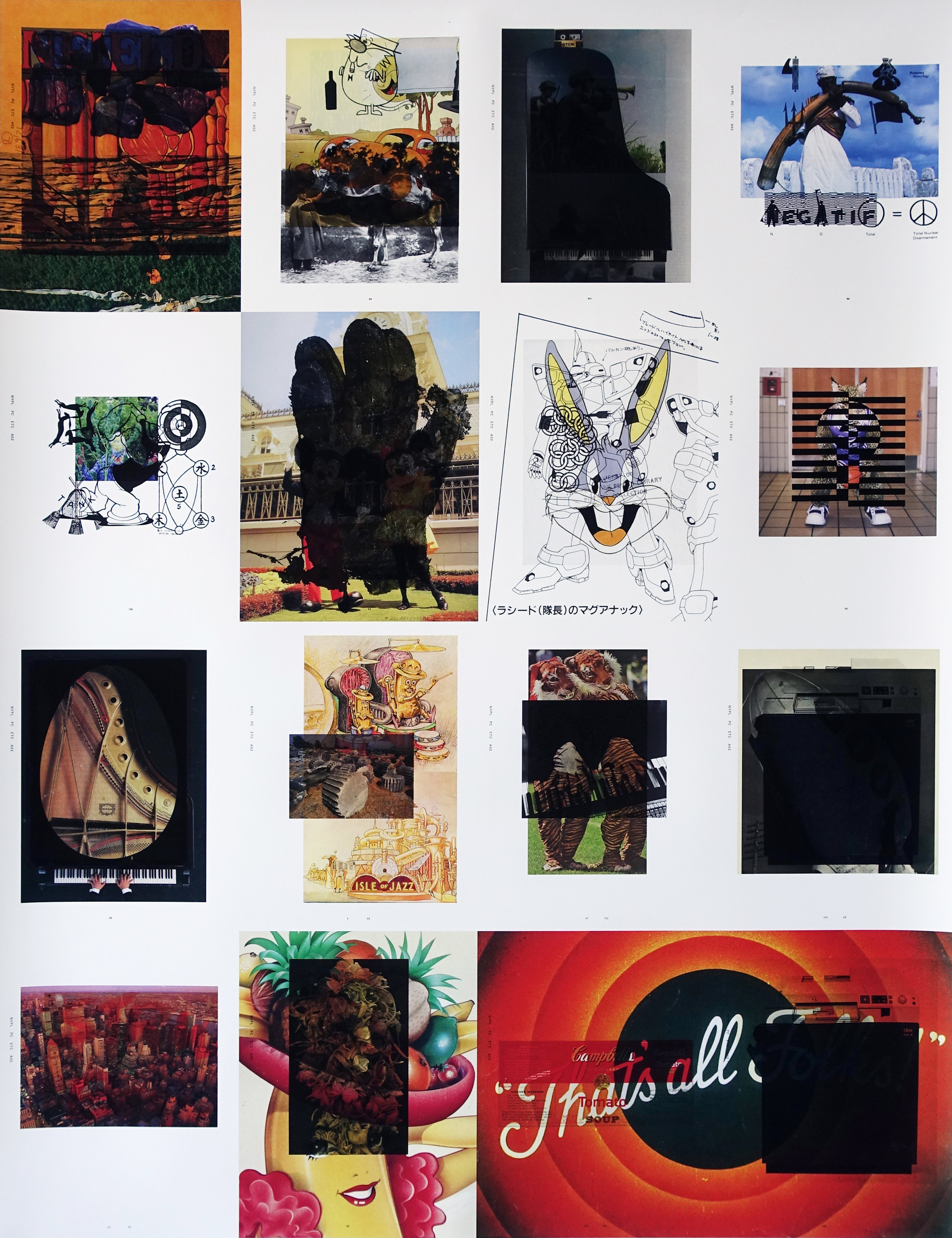
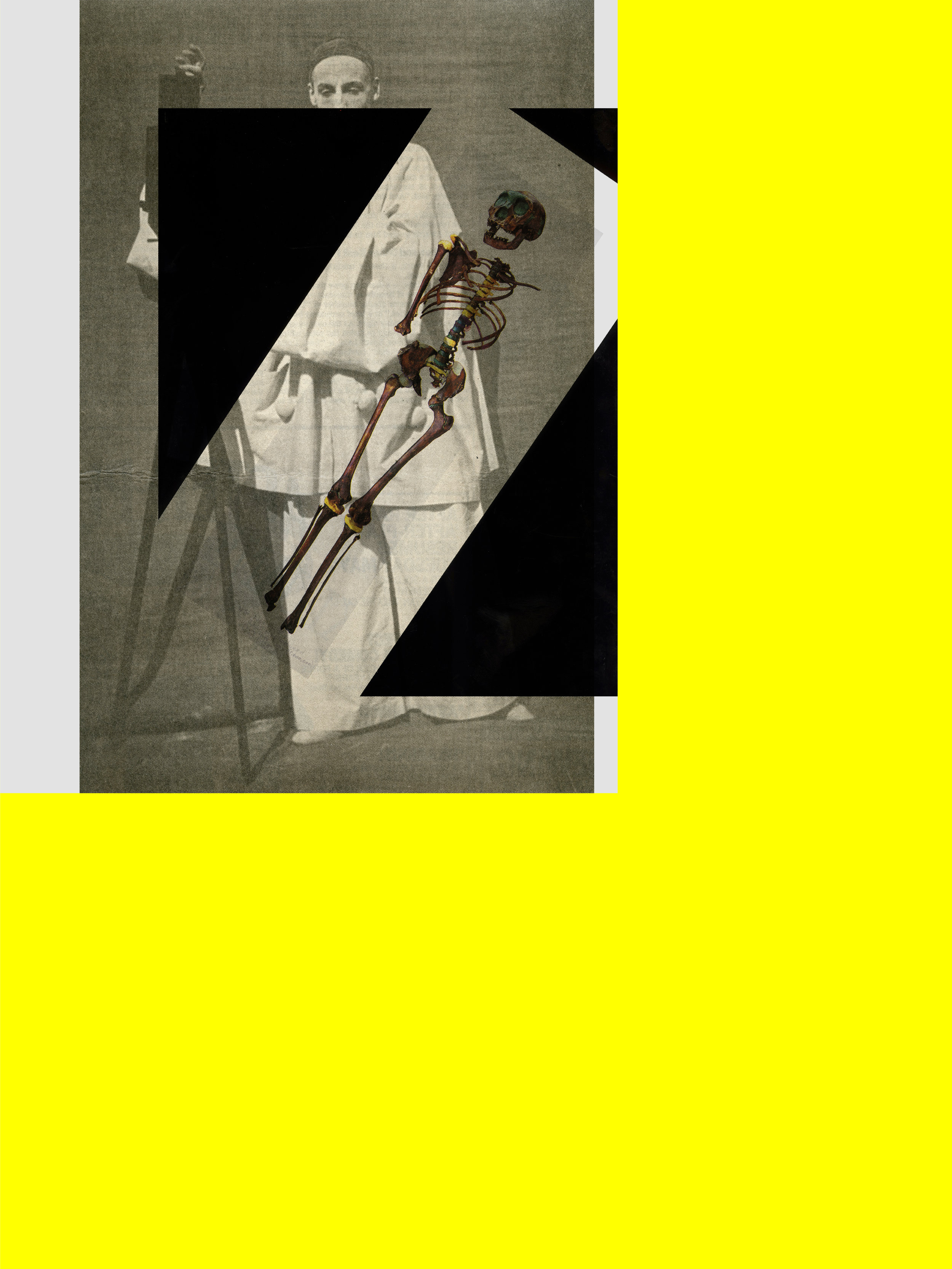
What are you working on now? What projects do you have coming up?
I recently finished a mural in the Midwest and released an artist edition with Printed Matter that debuted at Art Basel, and am working on plans for a mural in Manhattan which will be on the asphalt of a park alongside the East River. I also installed some work at Pioneer Works that will be up through September 10th.
Beyond that… getting the band back together, and always drawing something.
Symbolism is an important component of your work. How did you become interested in the topic?
I was raised in a rural Minnesota town in a religious family and community, so perhaps the fascination with symbolism starts there. I’ve always been fascinated by the tricks of logic and perception, how we communicate and interpret our environments, the intricacies of an evolving language in the history of humanity. Postmodern theory and semiotics really struck a chord when I was in school, pinning down a lot of ideas I was grappling with as a teenager. I didn't have a lot of immediate exposure to contemporary art - so it was subcultures from the 80's and 90's that functioned as the first portal for me, ripe with content and codes to break and assume. It took a certain work to gain access to this material, so I cherished the ephemera I accumulated.
Drawing is something I’ve always practiced and ritualized. There are a lot of different ways to draw. There are versions of it that I find similar to writing - sequential thoughts, notes, accumulative nodes, glyphs, graphics, and illusions space and objects and human scale. Symbolism is natural.
Can you talk about your print projects? You were just out in LA for the book fair, right?
I like the idea of people and communities making and sharing work with care through accessible and feasible means.
An influential professor of mine was passionate about artist’s books, so I in turn spent a lot of time meditating on that format, and it was a key for me in turning my process into an art practice.
It wasn’t initially intentional, but prolific output has been a constant in my practice. I often find that to make one thing I need to make 30 or 100. An old school design process that I’ve internalized, but … it goes back pretty far for me I suppose. I’ve always loved filling books.
When producing large quantities, and collaborating, which was a cornerstone of what I was up to when was living in Minneapolis, books and zines offered a perfect format to organize and present these bodies of output. It makes it sharable, but also offers perspective and is a way to internalize what a body of output is together - a formal matrix in the rhythm of sequence.
How do you choose the subjects for your drawings?
I work in a lot of different ways / process style aesthetic can be fairly fluid.
I like dreams and subconscious output. I collect images, books, objects that resonate strongly with me, and these things find their way in. I’m a reluctant surrealist, but entirely admit I play within that spectrum.
I’m comfortable drawing, and opening up to what is churning. It could feel similar to journaling, but involves looking for what is in the page – shapes in the clouds. I draw guides and grids unique to a page to break the silence sometimes and put them aside. I will impose simple rules on how to approach a series, and often change them as I go. I distract myself while drawing, watching movies and television: documentaries, sci-fi fantasy apocalypses, and slow dialogue heavy drama. Content seeps in. If nothing is there I make lines, I repeat myself, draw something again-ish, or open a book or three. Something is there.
Upon seeing a pattern of output in a body of work, it can be reinforced or broken to expand the matrix of content. Im always happy to break it. The body of work is often diverse: abstraction, figures, typography, historical design influences, loose mythologies, various formal contemplations, and some pleasantly simple allowances.
When an idea hits I try and be open, to not judge too much initially. There is at times truth and power in the dumb and simple things… though with that, I suppose be careful what you meditate on… You are what you eat. There's a dark darkness I’d like to avoid.
You have your hands in multiple practices (installation, print, illustration, sculpture...) Do they try to answer the same questions? What line ties these works together?
In a way they all come from the same process, but each direction offers forth unique opportunities: time, scale, intimacy, space, context. Drawing I can do anywhere, and it works a certain muscle, but addressing a large wall for example presents an entirely different set of parameters and allows a different kind of thinking. I’m going to decide what a mural is before i make it, at least to some extent, but I’ll use the openness of drawing to give myself options as I develop the idea.
I’ll decide to make drawings of sculptural proposals, regardless of whether or not I follow through on it. It changes what is drawn to imagine it at 100 feet.
Everything feels like a bit of a proposal.
Working on the computer changes things certainly, but I certainly employ a similar process. Iterations, versions, allowing mistakes. I started using computer drawing programs as a kid — so it never felt like much of a leap or difference.
The computer is a powerful tool, as is a solid sense of design and typography. It ties in directly to my engagement with symbolism, but goes further. It's a versatile method to approach a project.
The various formats and engagements create the diverse field of content. I employ the same thing within a body of drawings - expanding the field with each new component. It is universe building: all these things together, what complex reality is it?
It's drawings, jpgs, rocks, pages, rooms, walls, sounds, videos – it's real life. I enjoy the work of thinking through a process. Format comes with circumstance and opportunity.
What are the tie-dye works about?
I was dying T-shirts years ago with a collective in Minneapolis — and later started using the dye on paper - then on wood as paintings - then on wood as material for furniture designs - then back to fabric in a much more legit way. It's a fun material to work with, the results are surprising, it's very immediate, and its visually compelling every step of the way.
The initial drawings and paintings were for a fake post apocalyptic band on fake tour. Later, creating the material became the project - a platform for collaboration - producing a compelling but empty material - dying plywood for use in mundane structures, donating it to DIY spaces. Home Depot void and star gazing.
I find that some of the most psychedelic things are much less aesthetically psychedelic than we’re lead to assume.
You were just nominated for a Grammy for album art. How did the collaboration with Bon Iver happen? What are your ties to the music world?
I’ve been working with the music community in Minneapolis for over a decade now; playing music myself; collaborating on performances and installations; and making art and design in context of it all. Though I’ve been in New York for a while now, I remain deeply connected to that community, and we’ve all grown together… The Bon Iver work comes from that, connected through the fabric of it all. Up until this my ties were all to friends, DIY, and a handful of independent labels.
